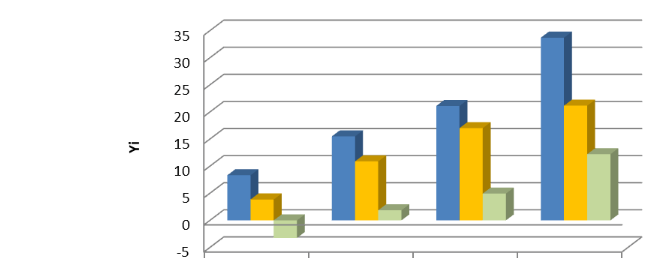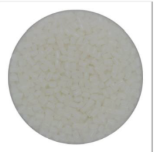Aliphatic polyamides of various structures have been commercially produced, of which PA6, PA66, PA46, PA11 and PA12 are the most important. Oxidative degradation in PA depends on the degree of crystallinity and the density of the amorphous phase. According to the traditional method, aliphatic polyamides are stabilized with small amounts of copper salts (up to 50 ppm) combined with halogen ions (such as iodine and bromide ions). The efficiency of this stabilizer system is surprising because copper ions are considered an aging aid in polyolefins. The mechanism of stabilizing effect of copper/halogen composite system is still being studied.
Aromatic amines are typical stabilizers that increase LTTS, but when used in PA, they can cause discoloration of polymers. Phenol antioxidants can improve the primary color after polycondensation to stabilize aliphatic polyamide. Generally, this antioxidant is added before the polycondensation reaction is terminated.
The table below compares the properties of different stabilizers used for aliphatic polyamide.
| AO system | Advantage | Weakness |
| Copper salts/iodide | Very effective at low concentrations
When the aging temperature is above 150 °C, it contributes greatly to the LTTS of the polymer |
Poor dispersibility in polymers
Leaching occurs easily when in contact with water or water/solvents May cause discoloration |
| Aromatic amines | It contributes greatly to the LTTS of polymers | Be in high concentrations
discoloration |
| Phenols | It contributes greatly to the LTTS of polymers
Good color performance Can be added during the concentration process No side reactions occur with other polymers during blending |
At high aging temperatures (e.g. above 150°C), copper/iodide stabilizer systems show the best results. However, at low aging temperatures, phenolic antioxidants alone or in combination with phosphites can be more effective. Another benefit of using phenolic antioxidants is that they retain the primary color of polypolymers until heat aging more effectively than copper salt stabilizers.
The discoloration of the polymer after heat aging does not decrease in parallel with its mechanical properties. Discoloration can occur even over a short period of age, but the tensile elastic strength and elongation of the polymer will not be affected until later.
A large body of literature describes the many applications of glass-fiber reinforced polyamides in the automotive industry, such as as engine blades, radiator caps and grilles, brakes and power steering accumulators, valve sleeves, tires, air brake contactors and hoods. Phenolic antioxidants, either alone or in combination with phosphite, are the best stabilizers for GFR PA66.
The base formula of the phenol + phosphite combination is 1098+168, which can be applied to relatively low non-enhanced processing temperatures, and the extrusion color is improved. However, for polyamide systems such as glass fiber reinforcement, the processing temperature is higher (nearly 300 °C), 168 high temperature decomposition failure, at this time, we mostly use 1098 + S9228 such a combination of better temperature resistance, which is also the most widely used formula in high-temperature nylon.
After systematic test results, it is found that 1098+S9228 still has room for improvement in the color improvement of high-temperature nylon, and Sarex Chemical launched upgraded products SARAFOS 2628P5 (phosphorus-based auxiliary resistance) and SARANOX PA2624 (hindered phenol and phosphite combination) have better performance in nylon high-temperature yellowing, and the relevant test data are as follows:
PA66, 270°C multiple extrusion and hot baking test

| ■0.1%1098+0.2%9228 | 8.32 | 15.5 | 21.11 | 33.71 |
| ■0.1%109810.2%2628P5 | 3.85 | 10.88 | 17.02 | 21.16 |
| ■3%PA2624 | -3.25 | 1.87 | 4.94 | 12.21 |
The above data were determined by the Sarex Chemical Laboratory
Compared with the same amount of addition of SARAFOS 2628P5 and S9228, the color of multiple extrusion and 120 °C heat storage for 12h have good performance, and the hydrolysis resistance of the product itself is also better than that of S9228, which has good application prospects in PA modification.
When there are higher requirements for the initial color, it is recommended to add SARANOX PA2624, in addition to powder form, we can also provide customers with PA antioxidant masterbatches and carrier-free antioxidant particles, which is convenient to add and disperse, and help the production workshop to be dust-free.
| PA66, multiple extrusion at 270 °C | 0.1%1098+0.2%9228 | 0.1%1098+0.2%2628P5 | 0.3%PA2624 |
| 1 extrusion |  |
 |
 |
| 3 extrusions |  |
 |
 |
| 5 extrusions |  |
 |
 |
| Bake at 120°C, 12h
|
 |
 |
 |
The above data were determined by the Sarex Chemical Laboratory
Post time: Nov-14-2022





